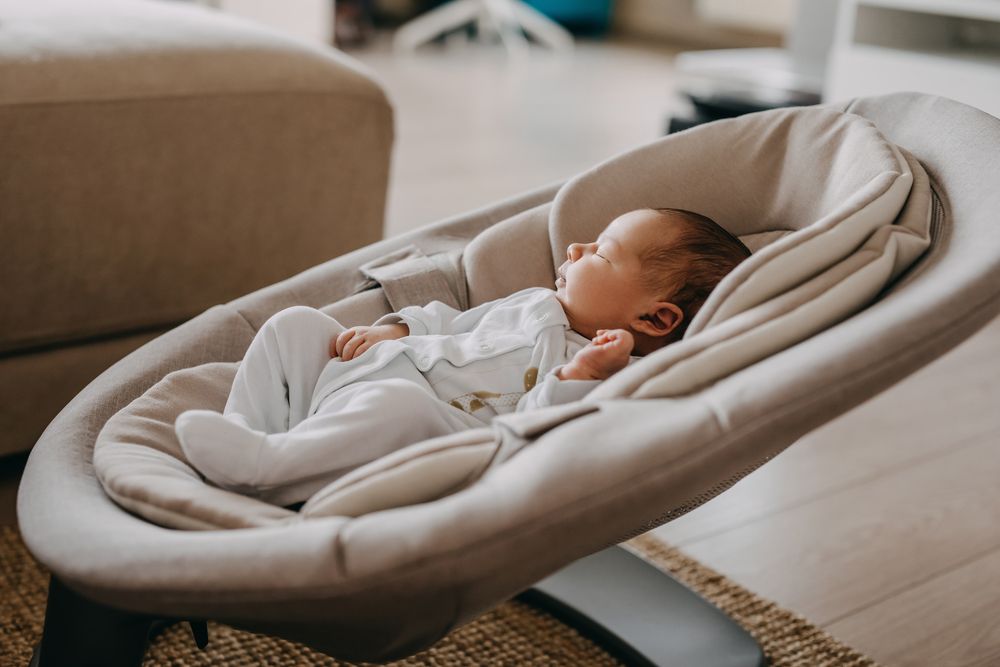When your baby is fussy and nothing seems to help, a baby swing can be the secret weapon every tired parent needs. The gentle rocking motion, soothing sounds, and cozy seat mimic the comforting environment of being held in your arms. But with so many baby swings on the market — each with different features, motions, and designs — how do you pick the one that will actually calm your little one?
The right baby swing is more than just a convenience. It can help your infant relax, extend naps, and give you a few minutes of peace. Whether you’re soothing a colicky newborn or just giving your arms a break, the right swing can be a game-changer. This guide breaks down what to look for and how to choose the best swing to meet your baby’s needs and your family’s lifestyle.
Start with the Basics: Why a Baby Swing Helps
A swing offers rhythmic movement that mimics the sensations of being rocked or cradled. This motion is often enough to lull babies into a more relaxed state — and in many cases, sleep. Beyond that, swings can keep your baby entertained while you get chores done, make dinner, or simply rest your arms.
Most parents use swings during the newborn to six-month stage, though age and weight limits vary. Look for a swing with supportive seating, smooth motion, and safety features to ensure your baby is both secure and comfortable.
Essential Features That Make a Difference
Baby swings come with a range of features, but not all are necessary. Focus on the ones that directly impact comfort, convenience, and effectiveness.
-
Motion type: Some swings move side to side, others front to back, and some offer both. Babies often have preferences, so it helps to choose a model with multiple motion options.
-
Speed settings: Adjustable swing speeds give you flexibility, especially if your baby is sensitive to motion.
-
Seat design: Look for a deep, padded seat with adjustable recline positions to support your baby’s head and spine.
-
Power source: Plug-in models save money on batteries, while battery-powered swings are better for portability.
-
Sounds and entertainment: Built-in lullabies, white noise, or nature sounds can enhance calming. Some swings also include mobiles or soft toys for visual stimulation.
Safety Comes First
All baby gear should meet essential safety standards, and swings are no exception. Look for a secure 3- or 5-point harness that keeps your baby safely in place, even if they begin to squirm. The swing should have a wide, stable base to prevent tipping and should sit on a flat surface away from furniture, cords, or hazards.
Also, follow the manufacturer’s guidelines for weight limits and recommended usage time. Experts generally suggest limiting swing sessions to 30 minutes at a time and not using the swing for overnight sleep.
Top Baby Swing Styles to Consider
Every home and baby is different. Here are the most popular types of baby swings available — and who they’re best for:
-
Multi-motion smart swings: High-tech swings with customizable motions, Bluetooth control, and built-in sound systems. Ideal for parents who want features like app control or motion that mimics a car ride.
-
Compact plug-in swings: Designed to save space and fit neatly into smaller rooms or apartments. Most offer 5–6 speeds, vibration modes, and simple setup.
-
Portable swings: Lightweight and often battery-powered, these are ideal for travel or moving from room to room. They’re a great secondary swing to keep at grandparents' homes or smaller spaces.
-
Convertible swing-rockers: These models double as a rocker or bouncer, helping reduce the number of baby gear items you need. Some allow the swing seat to detach and be used independently on the floor.
ADVERTISEMENT
5 Well-Rated Options That Parents Love
These swings consistently receive high ratings for comfort, calming ability, and value.
1. Multi-Motion Swings with Bluetooth Control
These often include five or more motion types (gliding, car ride, bouncing), plus Bluetooth app control. Some also integrate white noise, nature sounds, or lullabies. While they’re expensive, they’re highly customizable and ideal for soothing difficult sleepers.
2. Graco Simple Sway
A classic side-to-side swing with six speed settings, a small footprint, and a plug-in option. It also includes two vibration levels and simple controls, making it a reliable pick for budget-conscious parents.
3. Ingenuity Comfort 2 Go Portable Swing
Lightweight, battery-operated, and foldable, this swing is perfect for travel or apartment living. Despite its compact size, it offers decent swing speeds and built-in music.
4. Swivel-Based Multi-Direction Swings
These allow you to rotate the seat and switch between front-to-back and side-to-side motion. They’re a good fit for babies who don’t respond to just one movement direction.
5. Hybrid Swings and Bouncers
Models that convert between swing, bouncer, and rocker modes can save space and money. While not as powerful as full-sized swings, they offer flexibility for different times of day and baby moods.
Maximize Use While Staying Safe
Once you bring the swing home, placement and usage matter. Keep the swing in a main room where you can supervise your baby. Always use the harness and check the settings before turning it on. Begin with the lowest speed and slowly increase if needed. Babies often adjust to the motion over time, so patience is key.
Don’t use swings for sleep unless you're supervising, and avoid leaving your baby in the swing for extended periods. Remember — swings are a helpful aid, not a replacement for parent contact and cuddles.
Common Mistakes to Avoid
Many parents unintentionally misuse swings, even with the best intentions. Here are mistakes to watch out for:
-
Using the swing as an overnight crib or sleep replacement
-
Skipping the harness or letting baby nap without supervision
-
Running the swing nonstop or relying on it too frequently
-
Using it beyond the recommended age or weight limit
Being mindful of these common issues helps keep your baby safe while maximizing the benefits of the swing.
Final Thoughts
The best baby swing is the one that soothes your child, fits your space, and aligns with your routine. Some babies respond to motion immediately, while others take time. Choosing a model with flexibility — in speed, direction, and features — will give you the best chance of success.
Whether you invest in a high-end multi-motion swing or choose a budget-friendly portable model, the goal is the same: to create a calm, secure environment where your baby feels comforted — and you can take a breath.





